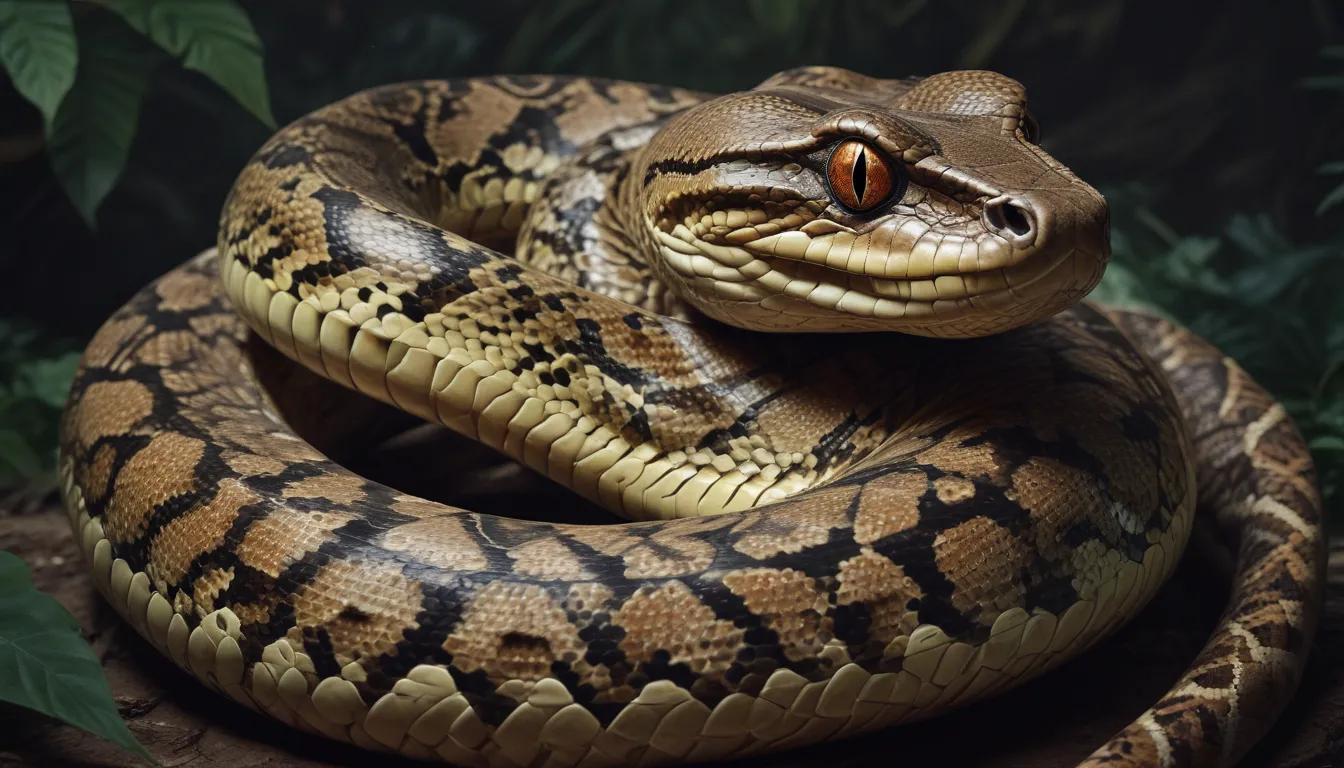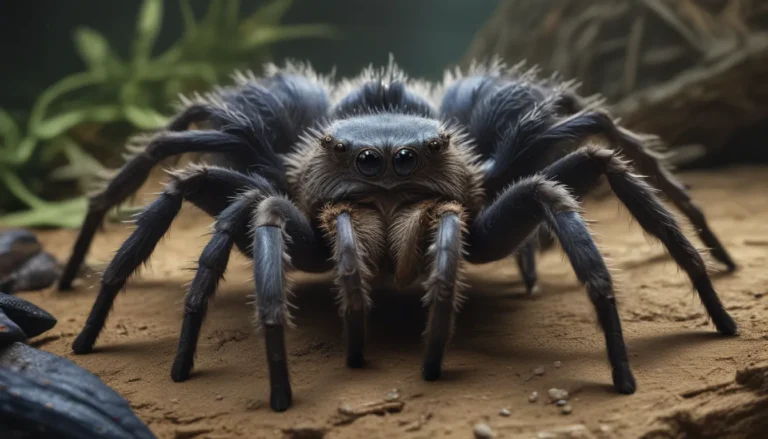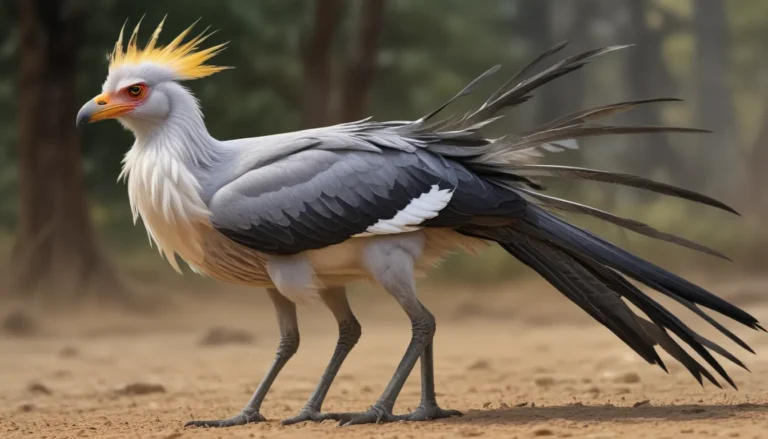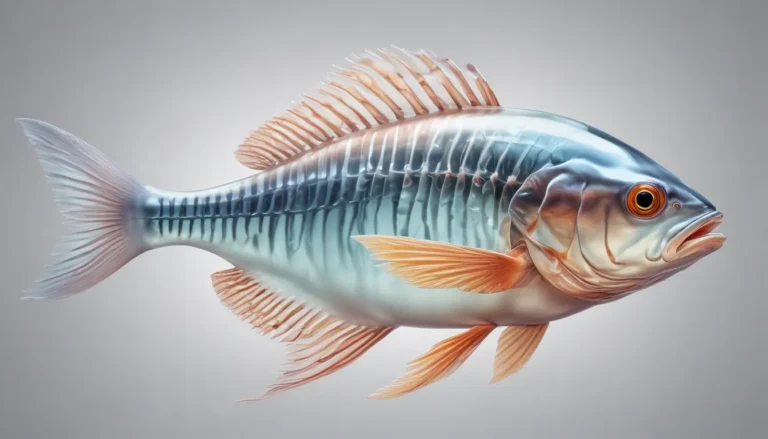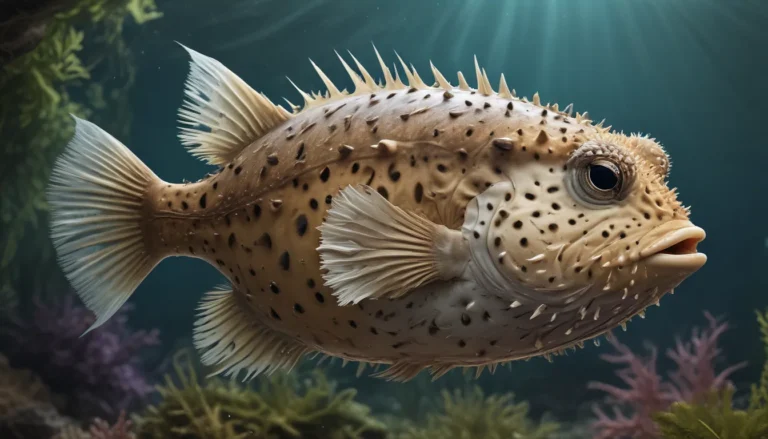The pictures we use in our articles might not show exactly what the words say. We choose these pictures to make you interested in reading more. The pictures work together with the words but don’t take their place. The words still tell you the important facts.
In the realm of wildlife enthusiasts and reptile lovers, the python stands as a captivating creature that intrigues and astounds with its distinctive patterns, impressive size, and intriguing behavior. With over 40 species found in various regions of the world, pythons have become a subject of fascination and study, shedding light on their anatomy, habitat, hunting techniques, and more. Join us as we embark on a journey to explore 17 intriguing facts about pythons, uncovering the mysteries and marvels of these extraordinary creatures.
Unveiling the Wonders of Pythons
- Pythons are fascinating non-venomous constrictor snakes known for their impressive size, unique hunting techniques, and vital role in maintaining ecological balance.
- The python’s influence extends beyond biology, as it has inspired a popular computer programming language and holds cultural significance in various traditions and folklore around the world.
The Python: A Master of Constriction
In the realm of snakes, pythons reign supreme as masters of constriction. These non-venomous reptiles possess the remarkable ability to suffocate and overpower their prey by coiling their muscular bodies around them, showcasing their predatory prowess in the animal kingdom.
Diversity in Python Species
With over 40 species to its name, the python displays a diverse array of characteristics and habitats. From the tropical landscapes of Africa to the subtropical regions of Asia and Australia, each species boasts its unique traits and adaptations that enable them to thrive in their respective environments.
The Giant Among Snakes: Impressive Size of Pythons
Pythons are renowned for their incredible size, often ranking as some of the largest snakes in the world. The reticulated python, holding the record as the longest snake, can reach staggering lengths exceeding 30 feet, captivating onlookers with its sheer magnitude and presence.
Unveiling Unique Hunting Techniques
As ambush predators, pythons exhibit unique hunting techniques that set them apart in the animal kingdom. Relying on their powerful muscles to constrict and suffocate their prey, which can range from small mammals to birds and reptiles, pythons showcase an unparalleled skill in the art of predation.
The Allure of Python Skin
The mesmerizing patterns and texture of python skin have captured the attention of the fashion industry, making it a highly prized commodity. However, the trade of certain python species is closely regulated to ensure their conservation and protection in the wild.
A Surprising Skill: Remarkable Swimming Abilities
Contrary to common belief, pythons are not just proficient land dwellers but also excel in the aquatic realm. With the ability to stay submerged for extended periods and maneuver through water with agility, these impressive reptiles showcase their adaptability and versatility in various environments.
Harnessing Heat-Sensing Abilities
Pythons possess specialized organs known as heat pits, which grant them the extraordinary ability to detect the infrared radiation emitted by warm-blooded animals. This unique adaptation enhances their hunting capabilities, allowing them to locate prey efficiently, even in low-light conditions.
The Mystique of Python Reproduction
In a fascinating display of maternal care, female pythons lay clutches of eggs rather than giving live birth. Coiling around the eggs to provide warmth and protection, these dedicated mothers ensure the safe incubation of their offspring until they hatch, a process that can span several weeks.
Embracing the Phenomenon of Shedding
As with all snakes, pythons undergo shedding to accommodate their growth. Shedding their old skin to reveal a fresh, vibrant layer underneath, these reptiles symbolize renewal and regeneration in the cycle of life.
The Arboreal Realm: Tree Dwelling Pythons
Certain python species, such as the green tree python, exhibit arboreal tendencies, spending a significant portion of their lives in trees. Their vibrant green coloration serves as a camouflage, allowing them to blend seamlessly into their forest habitats and evade potential predators.
The Testimony of Time: Long Lifespan of Pythons
Renowned for their impressive longevity, pythons can thrive for decades in captivity. Some species have been documented to live for over 30 years, showcasing a remarkable resilience and endurance that spans generations in the wild.
Guardians of Balance: Ecological Significance of Pythons
Pythons play a crucial role in maintaining ecological balance as top predators in their habitats. By regulating the population of prey species, these apex predators contribute to the overall health and stability of the ecosystems they inhabit, showcasing the interconnectedness of all living beings in nature.
Embracing Conservation: The Plight of Endangered Pythons
Unfortunately, several python species face the threat of extinction due to human-induced factors such as habitat loss and illegal wildlife trade. Conservation efforts are ongoing to protect these magnificent reptiles and ensure their survival in the face of adversity.
Venom-Free Marvels: The Non-Venomous Nature of Pythons
In a world dominated by venomous counterparts, pythons stand out as non-venomous predators that rely solely on their powerful grip and constriction abilities to capture and subdue their prey. This fascinating adaptation showcases the diversity and complexity of snake species around the world.
Astounding Digestive Feats
Pythons boast an astonishing ability to engulf and digest prey much larger than their own size. With flexible jaws and expandable stomachs, these reptiles can consume large animals that may take several days to be fully digested, demonstrating their remarkable adaptability in the wild.
Pioneering Influence: Python’s Impact on Programming
In a unique fusion of nature and technology, the python has inspired a widely used computer programming language that bears its name. Renowned for its readability and versatility, Python has become a popular choice among programmers worldwide, showcasing the enduring influence of these captivating reptiles beyond the confines of the natural world.
Echoes of Tradition: Cultural Significance of Pythons
Beyond their biological marvels, pythons hold a prominent place in various cultures and folklore around the world. Symbolizing fertility, wisdom, and transformation in some traditions, these enigmatic reptiles evoke a sense of wonder and reverence in the hearts of humanity, bridging the divide between the natural and spiritual realms.
Into the Depths of Python Lore
From their awe-inspiring size and hunting techniques to their vital role in ecosystems and cultural significance, pythons continue to evoke curiosity and admiration in the hearts of all who encounter them. Whether cherished for their beauty, revered in mythology, or celebrated in programming, the world of pythons is a tapestry of wonders waiting to be explored and understood.
Embracing the Enigmatic World of Pythons
In conclusion, the enigmatic world of pythons unfolds before us like a mesmerizing tapestry of wonders and mysteries waiting to be unraveled. From their impressive size and strength to their unique hunting methods and vital ecological role, pythons captivate and inspire us with their remarkable attributes and adaptations. By delving into the intricate tapestry of their existence, we not only gain a deeper appreciation for these incredible creatures but also cultivate a sense of responsibility toward conserving and protecting their natural habitats for future generations to cherish and behold.
Delving Deeper: FAQs on Pythons
Q: Are pythons dangerous to humans?
A: While pythons are large and powerful, they generally do not pose a significant threat to humans unless provoked or cornered. It is essential to exercise caution and respect when encountering wild pythons.
Q: How do pythons kill their prey?
A: Pythons utilize a method known as constriction to kill their prey. By coiling their bodies around the victim and squeezing tightly, they cut off the prey's blood flow and prevent it from breathing, ultimately leading to suffocation.
Q: What is the lifespan of a python?
A: The lifespan of pythons varies depending on the species, with some smaller species living around 20 years and larger species like the reticulated python exceeding 30 years in captivity.
Q: How do pythons reproduce?
A: Pythons are oviparous, meaning they lay eggs. The female python typically lays a clutch of eggs and coils around them to regulate their temperature and provide protection until they hatch.
Q: Where can pythons be found in the wild?
A: Pythons inhabit various parts of the world, primarily tropical and subtropical regions of Africa, Asia, and Australia. Each species has its preferred habitat, ranging from rainforests to savannahs and grasslands.
As we bid farewell to the mesmerizing world of pythons, we are reminded of the intricate interconnectedness of all living beings in nature. By embracing the wonders and mysteries of these captivating creatures, we embark on a journey of discovery and appreciation for the rich tapestry of life that surrounds us. Let us continue to explore, learn, and protect the precious biodiversity of our planet, ensuring a harmonious coexistence with the remarkable creatures that share our world.
